Preparing hydrangea for winter
It's a wrap! Here's how to put hydrangeas to bed for the winter.
Toggle Nav Toggle NavMenu
Account
Here’s expert advice from guest bloggers Megan Nichols and Jessie Jacobson of Tonkadale Greenhouse in Minnetonka, MN on how to put hydrangeas to bed for the winter season. (Their zip code may just contain more hydrangea trees and shrubs than just about anywhere in the U.S. — in other words, they know!)
There is a chill in the air and the signs of autumn are everywhere. Soon it will be time to put the garden to bed. All season long hydrangeas reward us with big, beautiful, abundant blooms. It’s fair to say they are givers. Now, it’s time to give back. With goodnight kisses and sweat dreams wishes, the time to tuck in hydrangeas is upon us.
Here in Minnesota, unpredictable winter weather extremes, snow totals, and freeze/thaw cycles can swing as wildly as our vitamin d deprived, cabin-fever-fueled moods. Although many hydrangeas are considered hardy, all of this can throw them for a loop. They need some attention in order to survive the winter and coming back bigger and better next year. While it’s true that hydrangeas grown in warmer climates don’t require as much post-season primping as those grown in our zone, there’s no one who wouldn’t be grateful for a bit of TLC right about now.
Implement these steps to maximize your hydrangea potential so you will be the giver of this time next season!
(Is it time to prune? Yes and no. Here’s our advice on which hydrangeas to prune now and which can wait for spring.)
Don’t Stop WateringTake the pledge! Raise your right hand and say “I will water my hydrangeas until the ground freezes solid.” Very good. It’s vital to water hydrangeas deeply and consistently as they are thirsty plants by nature. Their name basically means hydration, but we don’t need to geek out with Latin right now! Cool, drying winter winds suck the moisture right out of the plants – and hydrangeas don’t use lip balm. Doesn’t have to be hot to be dry!
In areas where a freeze is not an issue, water deeply but infrequently throughout the winter depending on the amount of rainfall you receive.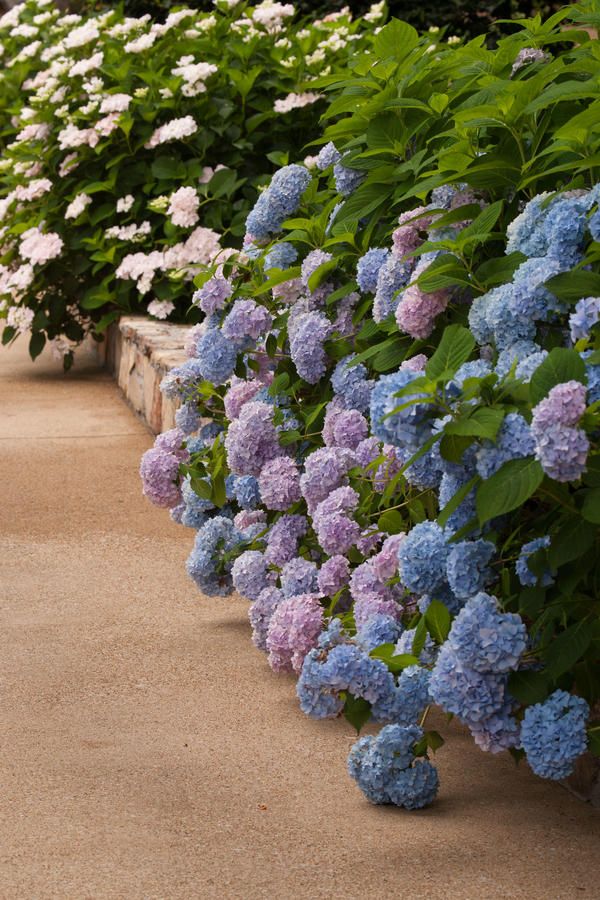
Here’s how:
One way is to make a small hole in the side of a 5-gallon bucket, fill with water, and set at the base of the plant, allowing the water to trickle out slow. Another is to turn on your hose to a slow trickle and place at the base of the plant for an hour or so.
Give your hydrangeas a boost for the next growing season by adding compost to your beds in the fall. After a good night’s sleep, everybody feels better with a good breakfast in their belly. The same is true for hydrangeas. They’ll be hungry for some good compost after a long winter’s nap. Applied now, compost can break down overwinter, making nutrients readily available in spring. Even in areas without a deep freeze, a few inches of compost is a good idea. We’re only talking compost here! Don’t offer your hydrangeas nitrogen-rich fertilizers which might incline them to put out new leafy growth.
Here’s how:
In colder zones, when the ground has frozen and before applying mulch, top dress with compost, well-aged manure or other organic matter. This nutrient- rich, organic fertilizer will break down over the winter and nutrients will be available to the plant in spring. In warmer zones, apply compost in late fall or early winter.
This nutrient- rich, organic fertilizer will break down over the winter and nutrients will be available to the plant in spring. In warmer zones, apply compost in late fall or early winter.
In colder zones mulching protects and insulates the crown and roots of your hydrangeas from extreme winter temperatures; in warmer zones it helps keep moisture in and weeds out. If all goes as it should, snow acts as a natural insulator. Weird winters with little snowfall and drastic temperature swings are detrimental to plants. To give hydrangeas their best chance at success, apply a layer of chunky mulch around the base of the plant. Decorative mulch is helpful but we recommend straw, marsh hay, or fallen leaves.
Here’s how:
After the ground has frozen (or in warmer zones late fall or early winter) and you’ve top-dressed with compost apply a 6”-8” layer of mulch. This insulates plants and protects plants from the heave-ho of spring freeze/thaw cycles that can push them right out of the soil. Mulching too early invites rodents to make this their cozy winter dwelling, causes rotting and disease, or tricks the plant into thinking it’s time to wake up. Be patient, just because your neighbors are doing it early, doesn’t mean you have to too.
Mulching too early invites rodents to make this their cozy winter dwelling, causes rotting and disease, or tricks the plant into thinking it’s time to wake up. Be patient, just because your neighbors are doing it early, doesn’t mean you have to too.
Whether or not hydrangeas need protection depends on how cold the winter temperatures drop. If the air temperature doesn’t go below 0 degrees (zone 7) there is no need for winter protection. In colder climates, wrap or completely cover marginally hardy hydrangeas. This is especially important for those that bloom on old wood, such as mop head/big leaf hydrangeas (Hydrangea macrophylla). However, it’s good to note that the newer varieties of mop head/big leaf hydrangeas bloom on both new and old wood. Good for them, good for us! Generally, hardier hydrangeas such as the paniculata and arborescens types don’t need extra winter protection, but extreme cold can cause die-back of their branches. If a colder than normal winter in predicted, consider covering.
Here’s how:
Loosely wrap plants with a couple layers of burlap, making sure to secure it with sturdy twine. Another option is to make a mulch mountain, covering the majority of the plant. This method works best for newly planted, smaller specimens.
Here in Zone 4, we are able to grow the first three types of hydrangeas; in warmer zones (zones 5 to 9) gardeners can also grow oak leaf hydrangeas. Fall is the best time for planting shrubs. Just be sure to follow the steps above, especially watering and mulching.
Here are a few of our favorites that you can plant right now for glorious blooms next spring.
Panicle Hydrangeas
Sometimes called PeeGee hydrangeas, these are late bloomers (summer into early fall). They’re covered with elongated, cone-shaped flower heads that start out white or green before blushing into pinks and peachy tones as the season progresses.
Strawberry Shake™ HydrangeaLong-lasting white flowers quickly mature to a rich strawberry pink and deep rose as cool fall weather arises.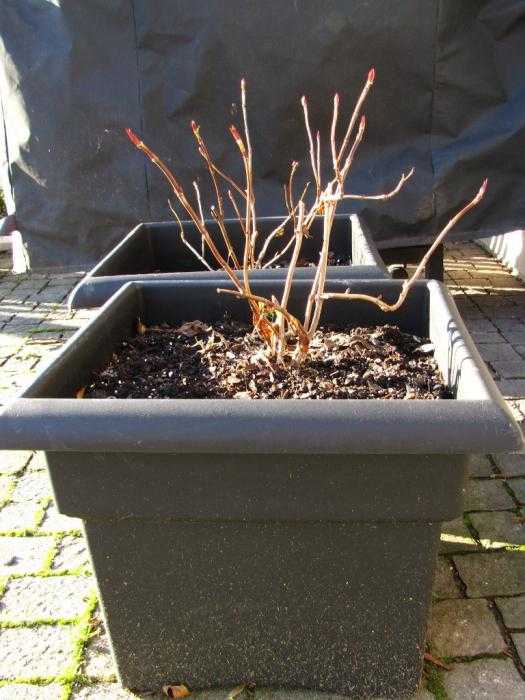 This is a compact panicle hydrangea with sturdy stems that holds the beautiful flowers aloft. Up to 5' tall and 4' wide. Zones 4–8.
This is a compact panicle hydrangea with sturdy stems that holds the beautiful flowers aloft. Up to 5' tall and 4' wide. Zones 4–8.
This compact selection features big lime-green panicles that mature to pure white and are held atop strong, sturdy stems that don’t flop. Flowers and foliage take on rosy hues as temperatures drop in fall. Up to 5' tall and wide. Zones 4–8.
Mophead Hydrangeas
French, big leaf, mop head, call them what you may, these are the classic, high-summer hydrangeas with large round or lace cap flower heads. While white varieties stay white, those that start out pink or blue can range in color depending on the acidity or alkalinity of the soil. (Note: Not all macrophyllas are reliably hardy in the coldest zones, and a tough winter can shut down their flower power.)
Blue Enchantress® HydrangeaStriking ruby-black stems support big mophead flowers on this exquisite re-bloomer. The large blooms turn blue in acidic soils and have a pink hue in alkaline soils. They mature to cream-splashed green. Up to 5' tall and wide. Zones 4–9.
The large blooms turn blue in acidic soils and have a pink hue in alkaline soils. They mature to cream-splashed green. Up to 5' tall and wide. Zones 4–9.
Huge ball-shaped blooms with thick, intense-pink florets on amazingly tough stems. The naturally compact habit has robust foliage with a maroon color in the spring and cinnamon-red in the fall. Up to 3.5' tall and 3' wide. Zones 4–9.
Smooth Hydrangeas
Native to North America and one of the prettiest, most useful flowering landscape shrubs, smooth hydrangeas bloom from late spring through summer into fall. Their big, round, flowers heads start out bright white and fade to limey green in the autumn.
Seaside Serenade® Bar Harbor HydrangeaThere's no need for another Annabelle option when you have Bar Harbor!
This is an extraordinary new, compact variety perfect for smaller spaces. Prolific amounts of big, white flowers turn heads all summer long, and the straight, sturdy stems stand tall even in heavy rain. These are perfect for borders, containers, and cutting gardens. Up to 4' tall and wide. Zones 3–8.
These are perfect for borders, containers, and cutting gardens. Up to 4' tall and wide. Zones 3–8.
Oakleaf Hydrangea
While not as cold tolerant as other types of hydrangeas, if your zone works for the oak leaf varieties, you need to plant them. Native to the U.S., they bloom best in areas where summers are somewhat hot and can thrive in much dryer locations than their mophead cousins.
Ruby Slippers Oakleaf HydrangeaLarge, white blooms cover this shrub in summer and quickly age to a deep pink color. These large blooms remain upright on strong stems even after heavy rains. Oak-like foliage turns mahogany in fall. Up to 3.5' tall and 5' wide. Zones 5–9.
Snow Queen Oakleaf HydrangeaLarge, long clusters of flowers are held upright above the oak-like foliage. The flowers emerge white and become rose-pink in fall as leaves turn deep red-bronze. The exfoliate tan-brown bark is beautiful in winter. Up to 5' tall and 6' wide. Zones 5–9.
Zones 5–9.
Previous Post Next Post
1 year ago
SHOW COMMENTS HIDE COMMENTS
When to prune hydrangeas | Grow Beautifully
6 years ago at 5:46 AM
[…] pruning requirements. Before you reach for the pruners, determine which species is growing.(Need advice on putting your hydrangeas to bed for the winter? We’ve got you […]
Reply
Kaye
6 years ago at 8:54 AM
Maybe I missed it but should hydrangeas be cut back at all in the Fall?
Reply
Kate Karam
6 years ago at 3:10 AM
Hi Kaye--it depends on the kind of hydrangea. It's all here in this companion post: http://growbeautifully.monrovia.com/when-to-prune-hydrangeas/
Reply
Marjorie
6 years ago at 9:54 PM
My hydrangeas never bloom! I bought 3 gorgeous verigated lacecaps...paid $75 each...never have seen them bloom since! Do they need a lot of sun, shade?????
Reply
Kate Karam
6 years ago at 1:19 AM
It's a misnomer that hydrangeas need shade.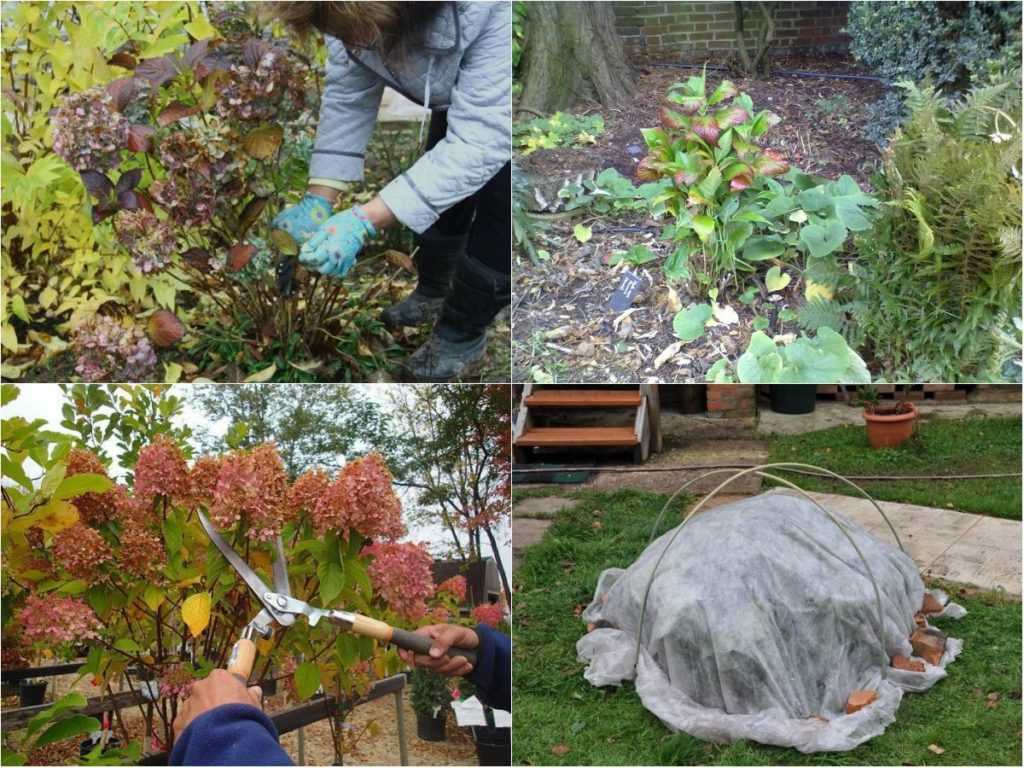 In the warmest climates they like some afternoon shade (and really, who doesn't!) but otherwise they do well in full sun. Tell me about where you have them planted, how old they are, and when you prune them. Maybe I can help you figure out this conundrum.
In the warmest climates they like some afternoon shade (and really, who doesn't!) but otherwise they do well in full sun. Tell me about where you have them planted, how old they are, and when you prune them. Maybe I can help you figure out this conundrum.
Reply
Judy Piroyan
6 years ago at 12:04 AM
Apparently you do not recommend cutting hydrangeas to the ground in fall? My Annabelle was very floppy this year- branches splayed out like a fan. I live in zone 3/4.
Reply
Kate Karam
6 years ago at 8:36 AM
Late winter or early spring is best. They bloom on new wood. As long as you prune before you see new growth, you're good to go.
Reply
Kate Karam
6 years ago at 8:31 AM
Endless Summer---this is a mophead thats been bred to bloom on both old and new wood. Can be pruned anytime. Quick Fireyes, this is a paniculata Boboalso a paniculata Pink Diamondlikely a paniculata Panicle hydrangeas bloom on new wood. in late winter or early spring before new growth begins cut stems back to about 18-24 inches high.
Reply
Peggy
6 years ago at 10:38 AM
Thank you for the advice!
Reply
Cliff Larson
6 years ago at 6:59 AM
How about some information on how to prune hydrangea's?
Reply
Kate Karam
6 years ago at 10:56 PM
Hi Cliff--there's a companion story about how and when to prune hydrangeas here: http://growbeautifully.monrovia.com/when-to-prune-hydrangeas/. If you have any specific questions, please let us know!
Reply
Deb Colletti
6 years ago at 5:06 AM
Please let me kn ow when to prune my hydrangeas.
Reply
Donna Mansfield
6 years ago at 7:38 AM
Enjoyed your article about hydrangeas. We live on the west side of the mountains in WA state and hydrangeas grow very well here. Like the idea of giving them some compost this time of the year.
Reply
Teresa
5 years ago at 10:58 AM
Love, love, love hydrangeas! I found this article helpful.
Reply
Deb Machel
5 years ago at 11:15 AM
My hydrangea did not bloom this year, and the leaves looked like they were spotted! Help!!
Reply
Gloria
5 years ago at 1:01 AM
Do I cut of the dried flowers
Reply
Mariann Kukla
5 years ago at 3:35 AM
We have many different types of hydrangeas and many have ?stopped blooming or have had fewer and fewer blooms each year. Our Our Nikki Blue have only 2 blooms this year. Big Daddy no blooms and Endless Summer 3 blooms. We do not trim these shrubs. Any suggestions?
Our Our Nikki Blue have only 2 blooms this year. Big Daddy no blooms and Endless Summer 3 blooms. We do not trim these shrubs. Any suggestions?
Reply
Anne Fitzpatrick
5 years ago at 10:26 AM
I live in Queens, NY. I haven't cut back my hydrangea in a few years. Today someone told me I should cut it way down, but I felt it was too later & I will lose next spring's flowers.
Reply
Dee
5 years ago at 10:13 PM
I think it depends on the type of hydrangea you have. Remember next year's blooms grow on old wood, new wood or both.
Reply
Dee
5 years ago at 10:05 PM
I was wondering....I have 3 Cityline Rio Bigleaf Hydrangea which I planted in July 2017....do I cover all of the plant with the burlap or am I just wrapping the burlap around each plant?
Reply
Dee
5 years ago at 10:11 PM
I should have told you I live in Canada and the winters could sometime be very harsh with -15 degrees Celsius temperatures. I had gotten a lot of beautiful blooms this summer. I am worried about the branches breaking should heavy snow or freezing rain fall on them. I considered putting a plastic laundry basket with the holes on the sides over the plants to protect them. Is this crazy? I don't want my Cityline Rio Bigleaf Hydrangeas to die.
I had gotten a lot of beautiful blooms this summer. I am worried about the branches breaking should heavy snow or freezing rain fall on them. I considered putting a plastic laundry basket with the holes on the sides over the plants to protect them. Is this crazy? I don't want my Cityline Rio Bigleaf Hydrangeas to die.
Reply
J. Nicatra
5 years ago at 7:49 AM
Love my
Reply
J. Nicatra
5 years ago at 7:50 AM
Love my plants
Reply
Michele Fabbro
5 years ago at 8:22 PM
All of my hydrangeas are mopheads. I plan to follow your suggestions above to prepare them for winter but "do I cut them" and if so, how much" for winter. Thanks
Reply
Kate Karam
5 years ago at 10:48 PM
It's all right here: http://growbeautifully.monrovia.com/when-to-prune-hydrangeas/ but the simple advice is you prune macrophylla hydrangeas in summer or early fall.
Reply
Kate Karam
5 years ago at 10:58 PM
I have just found this message, so apologies for late response.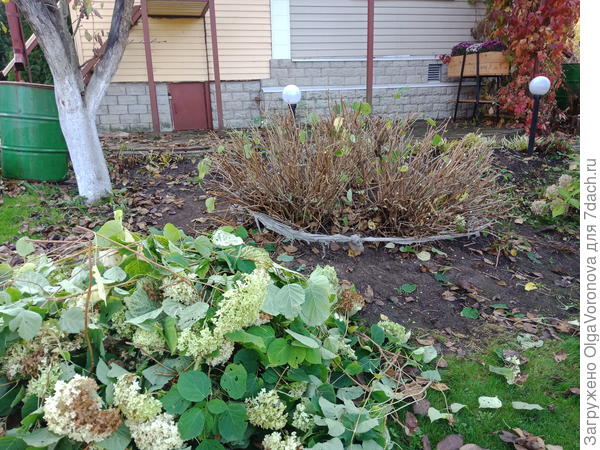 Here's the post with the info: http://growbeautifully.monrovia.com/when-to-prune-hydrangeas/ The short answer is you prune mopheads in late summer or early fall after they have finished blooming for the season.Remove up to one-third of the total stems each season, starting with the weakest shoots, both old and new ones. Cut these right down to the ground and remove. Whats left are a combination of old productive wood and strong new stems that will flower next season.
Here's the post with the info: http://growbeautifully.monrovia.com/when-to-prune-hydrangeas/ The short answer is you prune mopheads in late summer or early fall after they have finished blooming for the season.Remove up to one-third of the total stems each season, starting with the weakest shoots, both old and new ones. Cut these right down to the ground and remove. Whats left are a combination of old productive wood and strong new stems that will flower next season.
Reply
Debra Lorett
5 years ago at 4:07 AM
I had newly planted hydrangeas in September, in the first if November we had frost and some nights of freeze, which I put straw around and over my plants. Now its warmed up to 65-70 end of November they look droopy. Will it be ok to water the hydrangeas this late in the year and not harm them? Thank you
Reply
Kate Karam
5 years ago at 10:44 PM
They should be looking fairly wintery by now so no worries about that. As for watering, here's the deal--as long as you can water and assuming you are not having rains, you should continue to do so. It's really easy for plants to become desiccated in winter and dry up which affects roots. If you have solid frozen ground, don't bother to water, otherwise a good drink once a week is a great idea.
It's really easy for plants to become desiccated in winter and dry up which affects roots. If you have solid frozen ground, don't bother to water, otherwise a good drink once a week is a great idea.
Reply
Gloria Kelly
5 years ago at 12:44 AM
Why is it not difficult to find information on how to protect your hydrangeas for the winter months but almost impossible to find out when to take the burlap protection off? I live in Pittsburgh and have still not been able to find that information in a reliable way. Most sites, including yours, say to take the protection off in the spring. Does that mean when the nights do not drop below 32 degrees so that the buds don't freeze? Could you please let me know? Thank you!
Reply
Kate Karam
5 years ago at 11:02 PM
So, I spoke with the grower at our CT nursery and here is what she had to say: "Thats exactly the case with regards to temperature. Its important to protect the base of the plant where new growth will start. Its especially important to leave protection on the plant when all chances of frost have past. One early frost can toast your only buds on Hydrangeas that bloom off of old growth. Generally in the north thats Memorial Day weekend, but some years its warmer around Mothers Day. Freezing cold temperatures can dry out the old growth and increase the amount of dead branches you could be pulling/cleaning out in the spring. :-) hope that helps!"
Its especially important to leave protection on the plant when all chances of frost have past. One early frost can toast your only buds on Hydrangeas that bloom off of old growth. Generally in the north thats Memorial Day weekend, but some years its warmer around Mothers Day. Freezing cold temperatures can dry out the old growth and increase the amount of dead branches you could be pulling/cleaning out in the spring. :-) hope that helps!"
Reply
Frances White
5 years ago at 10:52 PM
Please share your opinion as to when the covering and mulch should be removed. I don't want to wait too long but want don't want to do it too early either. My hydrangeas are in the Chigo area.
Reply
Kate Karam
5 years ago at 9:47 PM
So, I spoke with the grower at our CT nursery and here is what she had to say: Its important to protect the base of the plant where new growth will start. Its especially important to leave protection on the plant when all chances of frost have past.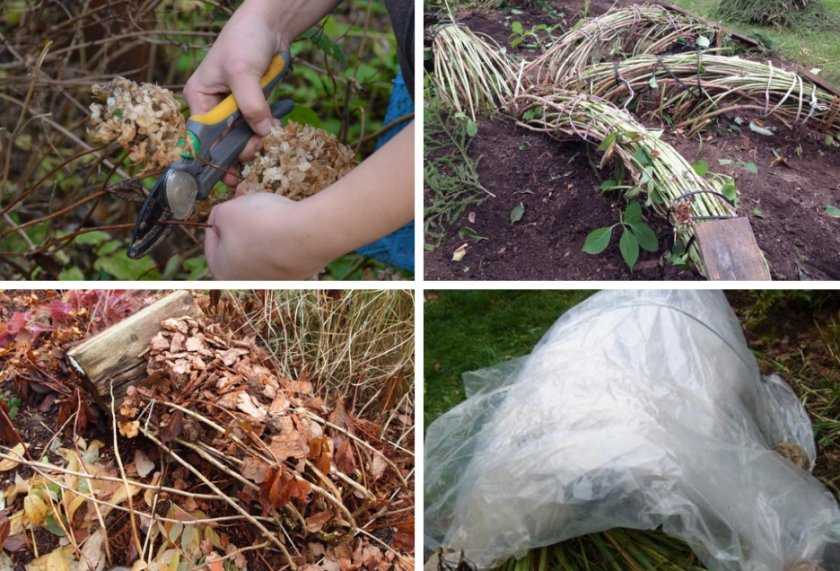 One early frost can toast your only buds on Hydrangeas that bloom off of old growth. Generally in the north thats Memorial Day weekend, but some years its warmer around Mothers Day. Freezing cold temperatures can dry out the old growth and increase the amount of dead branches you could be pulling/cleaning out in the spring. ? hope that helps!
One early frost can toast your only buds on Hydrangeas that bloom off of old growth. Generally in the north thats Memorial Day weekend, but some years its warmer around Mothers Day. Freezing cold temperatures can dry out the old growth and increase the amount of dead branches you could be pulling/cleaning out in the spring. ? hope that helps!
Reply
Claudette Collins
5 years ago at 7:27 AM
Because our hydrangea beds did not bloom (lots of lush green growth) lst summer, we didn't prune the plant last fall. What do we do with the 2 foot stems this spring? They are "Endless Summer" variety.
Reply
Claudette Collins
4 years ago at 1:14 AM
2 years ago we cut our Endless summer hydrangea back to 3 or 4 inches in late fall. These plants had bloomed profusely since planted 3 years prior. Last summer, we didn't get any blooms at all until late September and then only a few out of 12 plants with a north west exposure. So last fall we were told not to prune so we only removed the few blooms.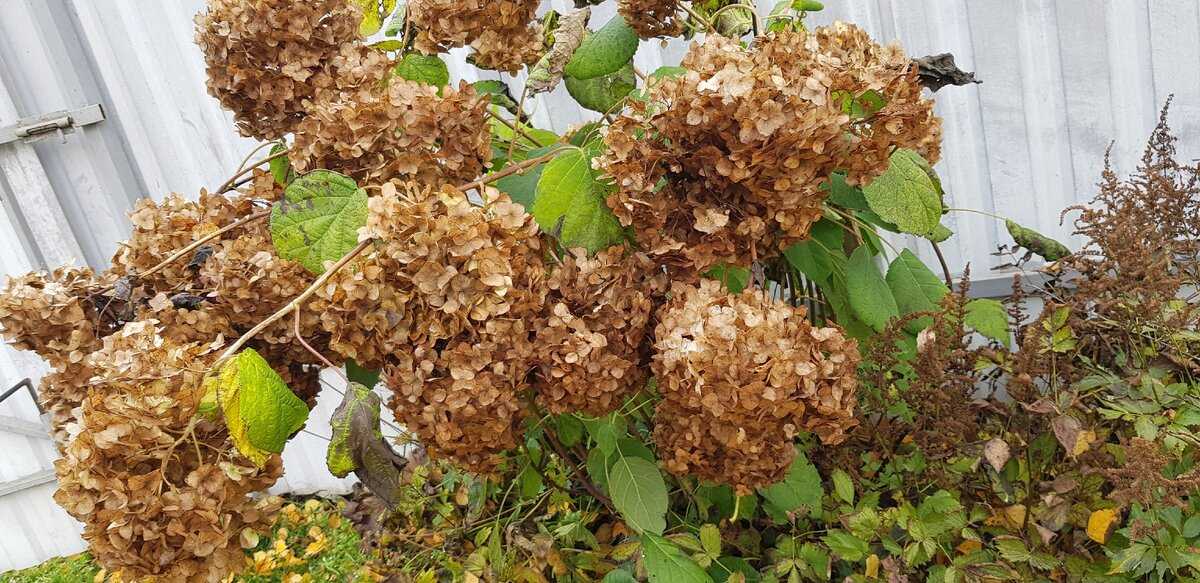 Now we have the long branches and don't know what to cut off if anything. Please advise.
Now we have the long branches and don't know what to cut off if anything. Please advise.
Reply
Kate Karam
4 years ago at 10:50 PM
Hi Claudette--sounds like a clear case of over-pruning (and I am wondering if your plants get enough light). Endless Summer blooms on both old and new wood. When you cut all that old wood, you cut away many of the existing flower buds. You got some blooms late in the season from buds that grew on the new growth of that same year. Your best course of action right now is to do NOTHING and see what happens this year. Let the plant have a chance to reset itself and then this fall, cut back the spent blooms. If the shape of the plant bothers you, you can prune it back by 1/3 - 1/2 in fall but once again you will be sacrificing flowers for one year, even two. Most mophead hydrangeas including Endless Summer need only minimal pruning.
Reply
victoria hesselbacher
4 years ago at 4:03 AM
Would you kindly recommend a journal or periodical or article or plant for flowering shrubs, trees, & hedges for zone 10, Saint Petersburg, FL? Specifically, I have recently relocated and am seeing young panicle hydrangea trees, and blooming hedges on Snell island in Saint Petersburg, FL. Thank you, victoria
Thank you, victoria
Reply
victoria hesselbacher
4 years ago at 4:06 AM
I need a resource for flowering shrubs, trees, & hedges for Zone 10, Saint Petersburg, FL? Specifically, I have recently relocated and am seeing young hydrangea trees, and blooming hedges on Snell island in Saint Petersburg, FL. Thank you.
Reply
Bev Braun
4 years ago at 11:34 PM
My endless summer hydrangea which are about 10 years old havent bloom but a couple flowers at all in 5 years! We fertilize with malorganite and have added the powdered to make them blue. I pruned them years ago but have been afraid to prune after they failed to bloom.. have I totally ruined them?
Reply
Lauretta Peterson
4 years ago at 1:45 AM
I live in zone 3 and have planted Haas Halo shrubs, nine of them. How do I care for them for the winter?
Reply
Kate Karam
4 years ago at 11:29 PM
Wow, that's cold! Lovely smooth hydrangea variety that's very cold tolerant. Typically a dense snow cover will provide all the protection your plants need, but it never hurts to top them in late fall with a layer of chopped leaves or other organic mulch.
Typically a dense snow cover will provide all the protection your plants need, but it never hurts to top them in late fall with a layer of chopped leaves or other organic mulch.
Reply
Marion
4 years ago at 9:49 PM
Last year I cut my hydrangea plant low 6-7 inches above the ground. It has not grown back. Should I remove the plant or may it still come back next year(s)? Thank you in advance.
Reply
Kate Karam
4 years ago at 11:05 PM
Hi Marion--by any chance do you know the type of hydrangea you have?
Reply
Eric Sykes
4 years ago at 3:33 AM
Thank you for this information on the winterizing of Hydrangea , have 4 varieties.
Reply
Kate Karam
4 years ago at 8:51 PM
Hi Eric--you are a hydrangea collector! We're glad it was helpful. Here's to a cold but not too brutal winter!
Reply
SUSAN BIRKENSHAW
4 years ago at 2:46 AM
On Oct 7 2016 you wrote a blog about Winterizing htdrsngeas and at the very top is a photo of pinkinsh hydrangeas with no identification could you please tell me the specific name of this one? Many thanks - S
Reply
Kate Karam
4 years ago at 5:30 AM
Hi Susan--that is Limelight Hardy Hydrangea (H.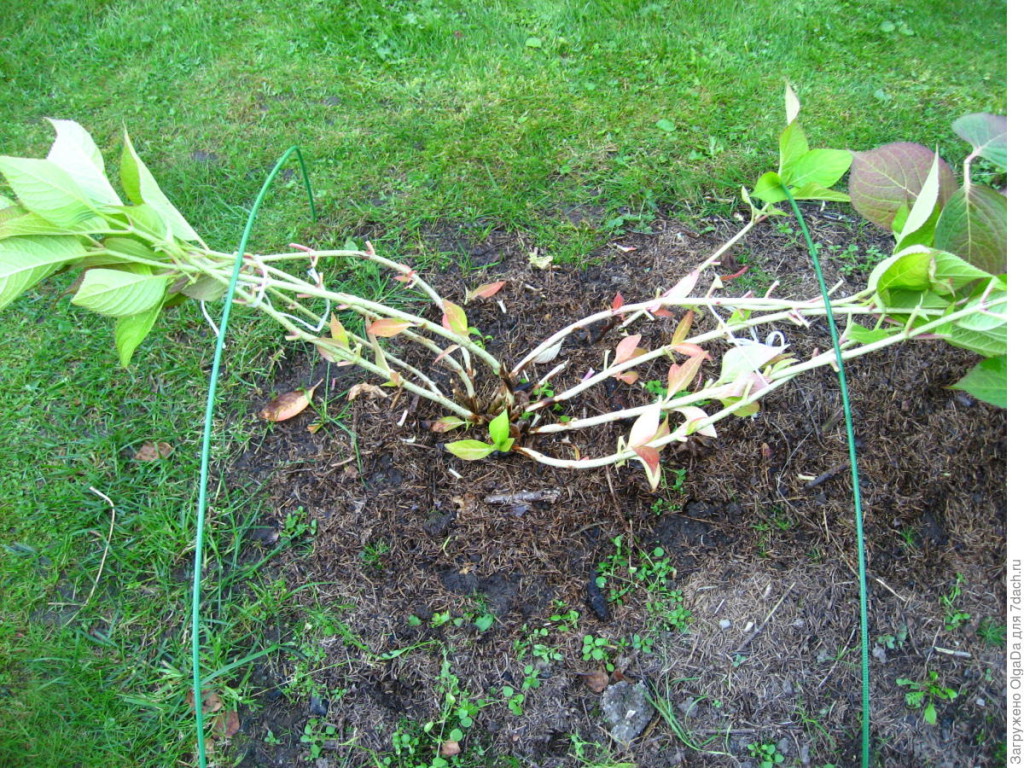 paniculata 'Limelight'). Here's the link (and I will add it to the story---thank you!): https://www.monrovia.com/plant-catalog/plants/3049/limelight-hardy-hydrangea/
paniculata 'Limelight'). Here's the link (and I will add it to the story---thank you!): https://www.monrovia.com/plant-catalog/plants/3049/limelight-hardy-hydrangea/
Reply
Judy
4 years ago at 12:21 AM
When do I cut back hydrangeas? or do I need to?
Reply
Kate Karam
4 years ago at 3:33 AM
If you never pruned your hydrangeas they would be fine. The reason for pruning is to spur new growth, remove damaged branches, and manage size. The time to prune hydrangeas varies by the type of shrub.
Reply
Donna
4 years ago at 11:47 PM
Helpful sight. I have a city line Berlin in a pot. Outside all summer, brought inside when started to snow last week. Radical freeze/thaw cycles in northern Wyoming. I will overwinter it in garage, plant outside in late spring. Any advice to keep it hardy once it lives in the ground full time?
Reply
Kate Karam
4 years ago at 4:03 AM
Um SNOW?! Wow, that seems early. The Cityline series is hardy to zone 5 which might be a bit warmer than your zone's minimum temperatures A few tips (1) plant where the shrub has some shelter from high winds which can stress it out (2) apply several inches of mulch at the base of the plant in late fall to provide insulation and (3) hope for more snow which helps a lot. Do not be surprised it it takes a few years to settle in. It might skip a bloom cycle or be sparse from year to year. Or it may surprise you and be totally happy. Thanks for the great question.
Do not be surprised it it takes a few years to settle in. It might skip a bloom cycle or be sparse from year to year. Or it may surprise you and be totally happy. Thanks for the great question.
Reply
Laurie
4 years ago at 10:05 AM
I want to trim the height of my mophead hydrangeas. How do I do this?
Reply
Kate Karam
4 years ago at 1:03 AM
Hi Laurie--At this point (late October) if you cut back your hydrangea, it is a very distinct possibility that you will remove buds that have grown this year set to flower next year. If you will wait until after they have finished blooming (likely late summer depending on the type), you can trim then. Try not to cut back by more than 1/3 of the height. You can always cut back again the next year if you don't reach the desired size. I hope this helps. Kate
Reply
Meg
4 years ago at 9:16 PM
I have a limelight hydrangea bush and a tree that were planted in the fall of 2014 and were beautiful this year but very overgrown and weighted down. I did only minimal research. and did not see this site, before deciding to cut back significantly last week, leaving 3 feet on the tree branches and 2 feet on the shrub. Since this variety grows on old wood, it seemed like a reasonable choice to bring it under control but the more I read, I am concerned that I have done permanent damage. I am in central New York so temperatures dip down to zero for a part of January. I plan to put compost down and was thinking I should wrap the plants in burlap to protect them since I have cut them down so severely. Have I killed these plants or should I just take precautions and hope for the best?
Reply
Alexandra Parker
4 years ago at 7:39 AM
Help....It is spring in FL now & I think I trimmed back my new hydranae too much. There are tiny buds ( a couple),. How can I bring it back to life?
Reply
rivercircle
4 years ago at 11:35 PM
Can anyone shed some light on my question? I have come to realize that my big leaf hydrangeas need winter cover to prevent winter damage in my cold winter climate.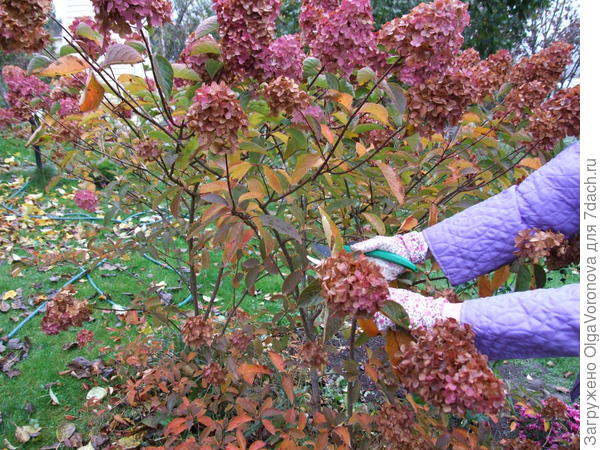 My question is, should I remove the cover prior to last frost to prevent any damage to the protected plant? Our days are warming nicely, but I still want to prevent any fungal type problems due to the impaired airflow to my large shrub. Thanks for any insights.
My question is, should I remove the cover prior to last frost to prevent any damage to the protected plant? Our days are warming nicely, but I still want to prevent any fungal type problems due to the impaired airflow to my large shrub. Thanks for any insights.
Reply
Karen Lea Cline
4 years ago at 11:48 PM
wondering if a plant was left outside , looking dead . what to do to bring it back is it possible?
Reply
Elaine
4 years ago at 3:58 PM
Would like to grow a white Hydrangea plant . Live in the snow cold country of idaho - any suggestions of which kind ? We have deers/ Bears and critters around ?
Reply
Debra
3 years ago at 2:20 AM
What is your zone? Annabelle may be perfect - to zone 4.
Reply
Lorraine Belcourt
3 years ago at 3:40 AM
Do I cut my new hydrangea back when preparing it for winter?
Reply
Jan Conti
3 years ago at 1:49 AM
I need a easier way to winterize the hydrangea plants I have 5 in a row.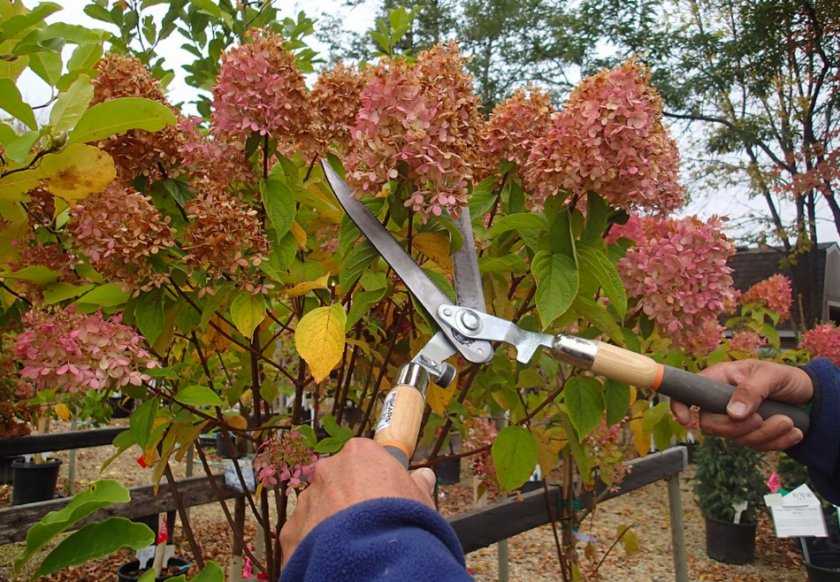 I m a senior with arthritis .
I m a senior with arthritis .
Reply
Lisa
3 years ago at 10:00 PM
Hi. I am in zone 5,N.E. Pa., and i want to over winter my potted hydrangea.I have no garage but am thinking about putting it in the open woodshed where it will be exposed to the cold but partially protected. Would that work with some protection on top and occasional water? Also, if it's protected from snow do I add water all winter,should it be warm water so it gets absorbed before it freezes?
Reply
Trish Lodor
3 years ago at 3:50 AM
This has been so helpful! Thank you!
Reply
Kathy Gilliland
3 years ago at 12:47 AM
I am a new hydrangea owner & we are experiencing our first freezes of the year. I have read you information which is incredibly informative but still have a couple of questions. Although it has been freezing st night, I have been covering the plant to protect it. Do I leave it uncovered & let it freeze to kill the foliage before pruning ( this is its first year so it is only about a foot or 2 tall) or just cut back now. Also do I let it go dormant before mulching and covering for winter?
Also do I let it go dormant before mulching and covering for winter?
Reply
Jody
3 years ago at 12:35 AM
My hydrangeas are in pots not in the ground. How should I winterize them? I live in MN as well. Thanks
Reply
M.J.
3 years ago at 4:26 AM
I have 8 Endless Summer plants. Can I use peat moss to cover the base of the plants for winter? (zone 4)
Reply
Lil Jernigan
3 years ago at 12:30 AM
What do you do with a root ball given to you in October in zone 7-9. Do we plant? Keep watered? Or just let it sit out of frost area?
Reply
Julie Dembiczak
3 years ago at 5:28 AM
I live in Chisholm Minnesota and I have 2 limelight Panicle Hydrangeas. Will the deer eat them if I do not cut off the flowers? Am I supposed to cut off the flowers in the fall? What would you suggest? I live in the country with deer around.
Reply
Jill Krygowski
3 years ago at 8:07 AM
We just got snow here on Halloween. .before I could do any hydrangeas prepping..I have 4 beautiful plants this year..but not sure how to care for them for the the 4 seasons..I'm in mid Illinois, will county. Any suggestions would be appreciated
.before I could do any hydrangeas prepping..I have 4 beautiful plants this year..but not sure how to care for them for the the 4 seasons..I'm in mid Illinois, will county. Any suggestions would be appreciated
Reply
Lyla E.
3 years ago at 11:52 PM
Thanks for this great article answering about any concern I had.
Reply
Carolyn Tanner
3 years ago at 10:20 PM
great information..... one question..my plants are tall, short, stubby , thin foliage... many plants in several areas .protected by tall brick walls, mulched in late September. buds are big and healthy. Do you or should I trim back some of the tall reaching branches ? Thanks Carol
Reply
Robin E Brown-Wood
3 years ago at 8:27 AM
this article was supposed to be about pruning hydrangeas for winter; that was never addressed!! not helpful at all for ME as that is the question i had regarding my hydrangea......
Reply
Jon Thorne
3 years ago at 6:41 AM
Mop head , container rasised, 1-1. 5ft tall central west Texes zone 7? How should I assure rebloom in spring? Thanks Jon
5ft tall central west Texes zone 7? How should I assure rebloom in spring? Thanks Jon
Reply
Janet
3 years ago at 11:30 PM
I have a Petite Hydrangea that is about five years old. Im in western Pa, so it gets cold during the winter but not like Minnesota. Its in a bed in the front of my house decorated with red rock. Should I put some sort of protection on the ground? This will cover up the rock though. In the past after cutting it back, I sprinkled some fertilizer on top of the rock at the base of the plant...that was about it. I also trimmed the branches...allowing them to remain about 10 high. Any problem with this? It seems to work. I fertilize in the spring too.
Reply
Kate Karam
3 years ago at 6:29 AM
Hi Janet--you are doing everything right except I would not fertilize in the fall as this only encourages new growth that could end up getting zapped by the cold. As for winter protection, there is no need to do more than add a few inches of mulch to the base or pile fallen leaves around the base both of which can help. Keep watering if you get a warm snap. All that said, it is not impossible to get a late cold blast that can impact flowering but there's not much you can really do about that. Enjoy your hydrangeas--real garden treasures!
Keep watering if you get a warm snap. All that said, it is not impossible to get a late cold blast that can impact flowering but there's not much you can really do about that. Enjoy your hydrangeas--real garden treasures!
Reply
Pat Arent
3 years ago at 3:46 AM
When do I cut off t he dead blooms and how far down to I cut? to the ground?
Reply
Chris Glazier
2 years ago at 5:35 AM
No I just read about ones blooming on old wood may be setting buds farther down. Early enough in year maybe take longer cuts. You would only cut to the ground during major reconstruction i believe and should take a couple times to do it down to where it will fill in better. Though some that down to the ground might re grow in a bad year.
Reply
Lori Bennett
3 years ago at 9:01 AM
I live in Canada - Calgary, Alberta. So you know it gets cold up here. Can a Hydrangea survive a winter up here?
Reply
Sharon
2 years ago at 1:12 AM
Great information! I live in Wisconsin, but conditions are similar to Minnesota for winter.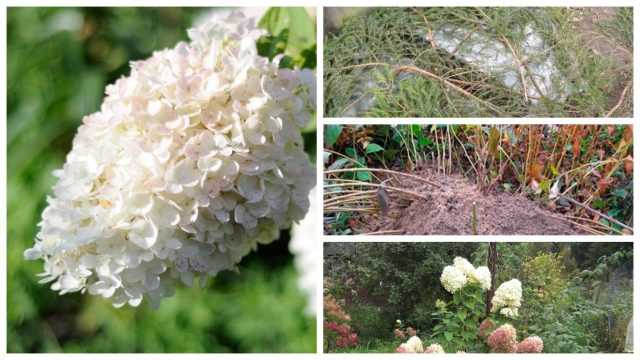 Thank you for the great advice!
Thank you for the great advice!
Reply
How to Select the Right Hydrangea for Your Garden – Grow Beautifully
2 years ago at 3:13 AM
[…] Get tips to Prepare Your Hydrangeas for Winter […]
Reply
MarilynCarrol Grondine
2 years ago at 4:40 AM
I have a Hydrangea in a flower pot, and I live in Minnesota. Currently it is sitting outside on the patio. How should I care for it this winter?
Reply
Janet
2 years ago at 3:33 AM
Thank you for your advise. It is greatly appreciated
Reply
Eveline Kasner
2 years ago at 8:14 AM
Do I cut all my flowers off now and do I cut my branches back?
Reply
Becky Craig
2 years ago at 7:39 AM
I have a cotton candy hydrangea. It has only grown about 1 1/2 feet tall. I've ahd it for 4 years. this year it didn't bloom. It has a lot of wood from previous years that nothing grows on. It's totally in the shade. I live in Kansas City area. Do I need to cut the wood before winter or wait till spring? Or how close to the ground do I cut it?
Reply
Jen
2 years ago at 11:52 AM
I have 3 Bobo hydrangeas I planted this spring after redoing my landscaping. I planted them in a rock bed in front of my house. How would I winterize them to make sure they come back next spring. It was a lot of work to redo that landscaping so anything to avoid extra junk to grow within the rocks would be best! Thank you for your response!!!
I planted them in a rock bed in front of my house. How would I winterize them to make sure they come back next spring. It was a lot of work to redo that landscaping so anything to avoid extra junk to grow within the rocks would be best! Thank you for your response!!!
Reply
Linda Hutten
2 years ago at 12:20 AM
I have the everblooming Monrovia plant that is five years old last year beautiful bloomsthis year 2020 huge plant but only 1 flower I live in Buffalo Ny cold winters I believe zone7. To prepare for winter for the first time I plan to cut plant down put mulch and compost down. I have never cut the plant down hope that is ok
Reply
Glenn Eacker
2 years ago at 11:01 PM
Should I cut off the flower heads? I have both panicula and mophead types. They are growing under a pine tree, and have done really well, after being planted just last fall. I live about a mile from Lake Michigan on our west side. The big lake does moderate our winters compared to inland areas.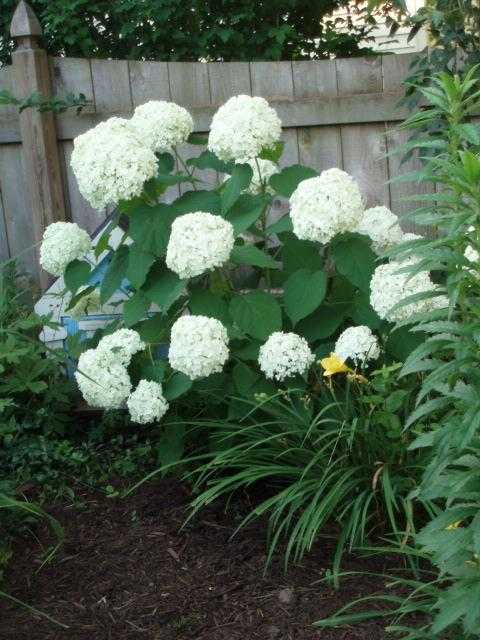 Thanks!
Thanks!
Reply
Bonita
2 years ago at 3:10 AM
Thank you for the info! I will go to the store to get "compost". What kind of compost? Is "mushroom compost" ok?
Reply
DON EWERS
2 years ago at 9:35 PM
No mention about pruning?
Reply
Nate
2 years ago at 7:58 AM
Do you cut them back? Prune?
Reply
Peggy Cook
2 years ago at 8:37 AM
I was also interested in how to winterize for a hydrangea vine which I just purchased this summer. Should I also wrap it and use mulch after the ground freezes. We live in southwestern Michigan. I just looked up the tag and it says it is a Hydrangea anomala var. petiolaris with glossy green, heart shaped leaves on a woody deciduous vine with while lacecap flowers blooming in June/July. Exfoliating cinnamon brown older barkfor zone 4.
Reply
Stephanie Dareing
2 years ago at 11:20 PM
I put in several Annabelle Hydrangeas this year. Well the leaves began curling and no flowers.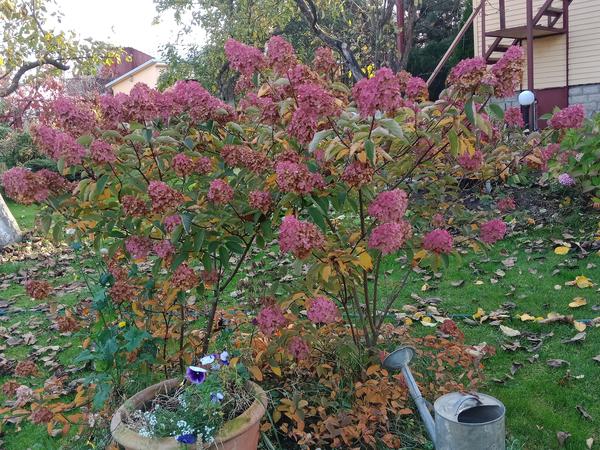 I learned it was from a worm that destroys the DNA. Should I destroy these plants and put something else there? I am so disappointed.
I learned it was from a worm that destroys the DNA. Should I destroy these plants and put something else there? I am so disappointed.
Reply
Sylvia Elise Bozzo
2 years ago at 7:34 AM
I am in a "cold" zone ... snow already, (8") but most has melted. This year I had very healthy looking plants (leaves), etc., but no blooms. Is my "ground" the problem? Did I prune incorrectly? (I cut fairly short last fall before the snow). Do I wait to cut in the springtime rather than now?
Reply
Jan Elsea
2 years ago at 4:00 AM
Can I cut back Oak Leaf plants as they have become to large for the area? Will the flowers come back in the Spring or will it take a couple of growing seasons for them to return? Thanks.
Reply
Alexa Johnson
2 years ago at 5:36 AM
Hi Jan, here's the skinny: Oakleaf hydrangeas bloom on the previous seasons growth. So, if you prune them right after bloom, you should get blooms the following year. However, if you need to cut them back really hard (more than a third of the growth), you might not get blooms the next year. But, you'll still be able to enjoy the lovely foliage and fall color while you wait for your blooms to return.
But, you'll still be able to enjoy the lovely foliage and fall color while you wait for your blooms to return.
Reply
Mary L Simmons
2 years ago at 1:46 AM
Thank you for info
Reply
Pamela Coons
2 years ago at 1:51 AM
I have several variations of hydrangea in the ground and 2 in pots. What is the best way to keep the healthy over winter. I live In Virginia Beach where the weather changes a lot.
Reply
Heidi Mason
2 years ago at 5:05 AM
very helpful thank you
Reply
Rozella Smith
2 years ago at 6:30 AM
When do you cut them back?
Reply
Joan woods
2 years ago at 12:01 PM
I just received a hydrangea plant for Valentine’s. I needs know how to take care it in pot, it been in -3 up 10 degrees now it in 30’s. I need help.Joan
Reply
Megan McConnell
2 years ago at 1:54 PM
Wait until temperatures are above freezing before you move it outside. Keep in mind that not all hydrangeas are hardy in cold areas, so make sure it is hardy where you live if you were planning on planting it in the ground. A local garden center can give you more information about growing hydrangeas in your climate.
A local garden center can give you more information about growing hydrangeas in your climate.
Reply
Barb
2 years ago at 7:10 PM
Where’s Kate? Her consistent and knowledgeable answers are truly missed! :-)
Reply
Megan McConnell
2 years ago at 9:40 AM
That's so sweet! I'll let her know you said that. Kate's not with Monrovia anymore, but you'll see a few posts from her soon; she's doing some freelance work for us. We've got a new blog writer coming in at the end of the month and she's awesome. You're going to love her! So keep an eye out for Emily.
Reply
Karen
2 years ago at 11:25 AM
Great info! Do you have any guidance on when and how to uncover? I am in zone 5b and it is warming up, I want to remove the leaves so they don't rot but am afraid of potential late season frosts.
Reply
Megan McConnell
2 years ago at 11:43 AM
My best advice is to check with a local garden center or other experts in your area.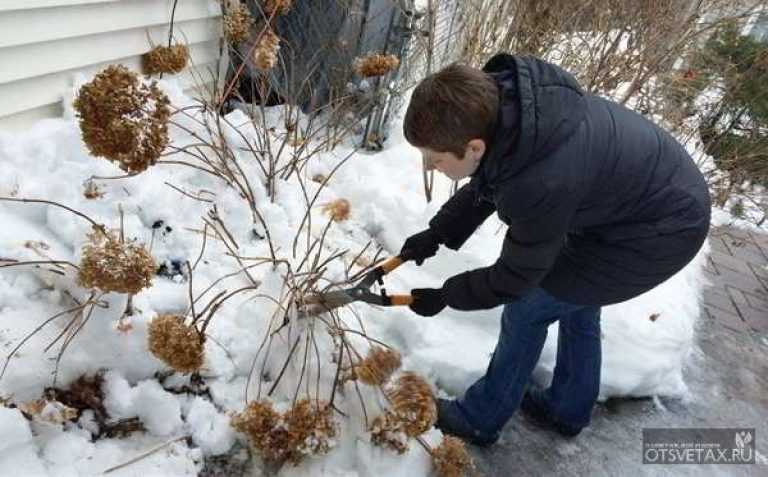 They are going to know what is best for your climate. Besides that, try googling the average last frost date in your area. That's a good time to uncover them, but still keep your eye on the weather forecast. If they predict a late frost, you can throw a cover back over them for the night.
They are going to know what is best for your climate. Besides that, try googling the average last frost date in your area. That's a good time to uncover them, but still keep your eye on the weather forecast. If they predict a late frost, you can throw a cover back over them for the night.
Reply
Gay Fitzgerald
1 year ago at 7:12 AM
I planted my hydrangea in cement Victorian urns. They are too heavy to move. I live in Eastern Pa. Outside of Harrisburg. I’m looking for the best way to cover them for the winter. I know they should be watered until freezing temps but I’m afraid the soil will freeze. Any help would be welcomed!
Reply
Emily
1 year ago at 9:00 AM
Hello, try a thick 1-3" layer of mulch to insulate the soil and covering the plant with burlap. Good luck!
Reply
Howard G Kacsh
1 year ago at 6:52 AM
this is a first time having these kind of plants. they look beautiful everywhere else but our home. We planted 6 Summer CrushEndless Bigleaf (3. 9 gal/14.9 L ) it reads fun/part sun and many of the flowers are turning black. most to all are fine, they had beautiful red color and the color is lost. bought Holly tone for color and plants. we get west sun in morning. will these plants come back next year? I've watered when needed and only bought that food for plants when I went into an excellent nursery. We love the plants but would appreciate your advice in this matter.. thank you Howard Kacsh
9 gal/14.9 L ) it reads fun/part sun and many of the flowers are turning black. most to all are fine, they had beautiful red color and the color is lost. bought Holly tone for color and plants. we get west sun in morning. will these plants come back next year? I've watered when needed and only bought that food for plants when I went into an excellent nursery. We love the plants but would appreciate your advice in this matter.. thank you Howard Kacsh
Reply
Emily
1 year ago at 11:38 AM
Hi Howard, we don't grow that variety, so don't have any specific advice for it. However, I would expect that it will return next year -- hopefully healthier! In the meantime, remove the spent flowers and double-check the amount of fertilizer and/or water it needs. Sometimes overwatering and overfertilizing can stress the plant. Good luck in the spring!
Reply
Monica the flower lady
1 year ago at 4:23 PM
Thank goodness for ur help I have 5 new hydrangeas zone 8 all mop head n want them to survive the winter two however are miniatures. I gave them fertilizer to winterize them last fall n they grew 5 times their size when originally purchased might have to give one away bc three r huge! So I will compost n mulch with nugget mulch this winter ty!!!
I gave them fertilizer to winterize them last fall n they grew 5 times their size when originally purchased might have to give one away bc three r huge! So I will compost n mulch with nugget mulch this winter ty!!!
Reply
Roberta
1 year ago at 2:00 PM
I have a small Annabelle hydrangea (based on the photos above). She is in a small pot. I fed her and she has lots of new foliage. It is now September. I live in zone 7. Do I put her in the ground or do I bring her in for the winter? I have a garage that has no sun. I also have a back closed in porch that gets light in the winter but it could be cool out there in the winter. In really cold temperatures in the winter I run a heater in the porch at night only. I appreciate your advice. I have many lime light plants and so I do not want this new one to die. TY
Reply
Emily
1 year ago at 9:40 AM
Hello, you could do either! Fall is a great time for planting if you know of a great place to plant her.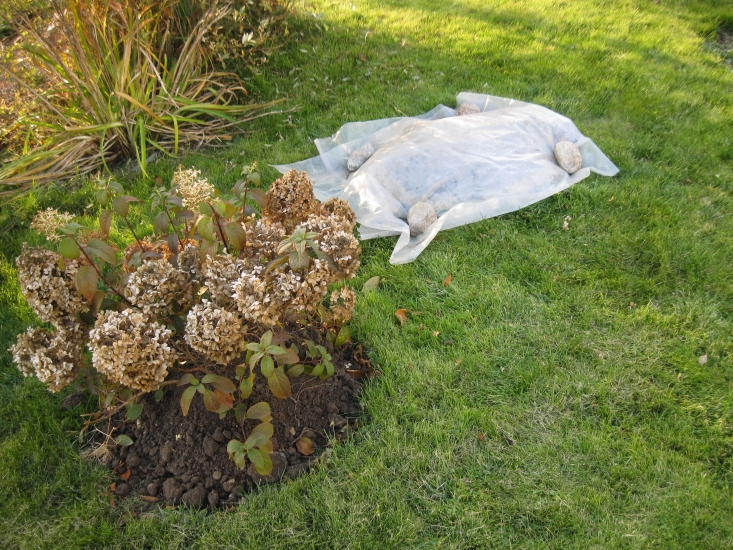 If you'd rather keep her in a pot, you could do that, too.
If you'd rather keep her in a pot, you could do that, too.
Reply
Robyn G Leckner
1 year ago at 11:29 AM
This article was very helpful for me! I live a little farther north in Minnesota and I have quite a few hydrangea's. I have mostly learned from the plant itself. Now I can ask them at Tonkadale Greenhouse. Thank you! R Leckner
Reply
June Curtis
1 year ago at 8:08 AM
My Big Daddy Hydrangea has been planted 2 yrs but doesn’t bloom. Last fall I put dead leaves to top & covered with a plastic garbage can. Still no blooms this year. What can I do?
Reply
Emily
1 year ago at 9:40 AM
Hello, I'm sorry you haven't been able to enjoy any blooms! It's hard to know exactly why it's not blooming, but often hydrangeas won't bloom if they've been either overfertilized or pruned at the wrong time (or both). Sometimes they don't bloom because of harsh winter weather or fluctuations in spring temperatures. There are a lot of variables to take into account. Avoid pruning your hydrangeas in late winter, spring, or early summer. Next season if you decide to prune them, prune in the fall after they are done blooming. Good luck!
Avoid pruning your hydrangeas in late winter, spring, or early summer. Next season if you decide to prune them, prune in the fall after they are done blooming. Good luck!
Reply
Search The Blog
Grow Beautifully
SIGN-UP FOR DESIGN INSPIRATION AND UPDATES ON NEW PLANTS
Hydrangea Care For Late Winter | Pruning Tips and More
Hydrangeas are beautiful flowering plants with dramatic blooms that provide color and drama in the summer garden, but they can be fussy if they don’t get the proper care and attention. Proper hydrangea care for late winter is key. Improper pruning and other common mistakes, compounded with difficult weather, can lead to disappointment. Luckily, my podcast guest this week, Lorraine Ballato, is a hydrangea expert who will help you overcome the biggest hydrangea challenges.
Lorraine is a garden writer, speaker, photographer and all-around authority on hydrangeas. In fact, she wrote the book on hydrangea care: “Success with Hydrangeas: A Gardener’s Guide.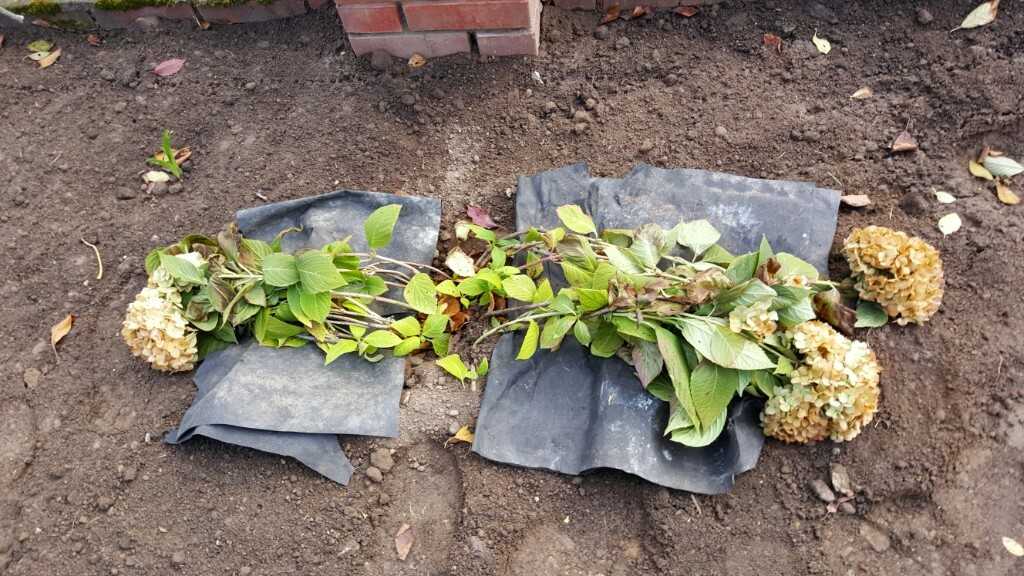 ” She says hydrangeas are one of those plants that are a bit of a diva and are persnickety about the approach gardeners take when it comes to caring for them. She reminds gardeners to keep in mind that what works in one region won’t be the best approach in another. The best thing to do for a hydrangea in Washington in winter could be the absolute wrong thing to do for one in North Carolina. And, she adds, different hydrangea varieties have different needs.
” She says hydrangeas are one of those plants that are a bit of a diva and are persnickety about the approach gardeners take when it comes to caring for them. She reminds gardeners to keep in mind that what works in one region won’t be the best approach in another. The best thing to do for a hydrangea in Washington in winter could be the absolute wrong thing to do for one in North Carolina. And, she adds, different hydrangea varieties have different needs.
Lorraine Ballato is an expert on all things hydrangea. (photo: A. Ballato)
Hydrangea Care in Deer Country
Lorraine lives in zone 5b, where, in March, it’s quite cold. There are between 2 and 3 feet of snow on the ground, and in that snow she can spot tracks, which means deer are out browsing.
“If you live anywhere in deer country, as soon as it gets above freezing, and as soon as it’s dry, get out there and spray, because this is the time of year, they start to really ravage everything,” Lorraine advises. The deer are hungry, the does are pregnant, and the time to train them that your garden is not their salad bar is before all the snow is gone and before they give birth. The does will train the fawns where to eat, so don’t wait.
The deer are hungry, the does are pregnant, and the time to train them that your garden is not their salad bar is before all the snow is gone and before they give birth. The does will train the fawns where to eat, so don’t wait.
Make sure you are upwind when applying sprays. “You do not want to be downwind of any deer spray that you use,” Lorraine says — and she means it. As soon as you’re done spraying, whatever clothing you’re wearing should go right in the wash.
In addition to spray repellents for deer, there are systemic repellents. The systemics are applied when plants are actively growing. The plants take up compounds such as denatonium benzoate through their roots, infusing the leaves with a bitter flavor that will deter deer. These are not meant for food crops, but can be applied to ornamental plants.
I’m in zone 7b, where dormant shrubs will be leafing out soon, and that’s just candy for deer. I have a family of 13 deer that enjoy my property, where I don’t have deer fences. For fence-free solutions to keep deer from eating your vegetable garden and ornamental plants, you can listen to my conversation with landscape design expert Karen Chapman on how she keeps deer away from the plants on her rural property in the Pacific Northwest.
For fence-free solutions to keep deer from eating your vegetable garden and ornamental plants, you can listen to my conversation with landscape design expert Karen Chapman on how she keeps deer away from the plants on her rural property in the Pacific Northwest.
Here are just a few of the 13 deer that enjoy my fence-free property and will soon be enjoying the dormant shrubs that are on the verge of leafing out.
Prepare Before Pruning
Before setting out to prune shrubs, make sure to have the right tools for the job and that they are all sharp and disinfected. Tools that touched diseased plant material the prior year may still be carrying those pathogens and can transfer them while cutting.
Lorraine also recommends disinfecting tools between pruning each plant to prevent the transfer of pathogens. She uses disinfectant wipes or rubbing alcohol in a spray bottle. What she doesn’t recommend is bleach, which is corrosive to metal surfaces.
There are two kinds of pruners, and each is for a different task. A bypass pruner has a scissor-like action, where the blades pass by each other. An anvil pruner has a sharp blade that squeezes down onto a blunt side, in a crushing action.
A bypass pruner has a scissor-like action, where the blades pass by each other. An anvil pruner has a sharp blade that squeezes down onto a blunt side, in a crushing action.
Use a bypass pruner to cut anything that’s live. It will give a nice clean cut, Lorraine says, noting to cut at a 45° angle. Meanwhile, an anvil pruner is appropriate for deadwood. If one is used on live wood, it will bruise the plant, she warns.
Use a bypass pruner to give a nice clean cut to anything that’s alive. Lorraine says to cut at a 45° angle. (photo: Lorraine Ballato)
Remember that dormant branches are alive, even though they may not look like it. Some gardeners make the mistake of thinking their hydrangea’s top growth is all dead, so they cut it down to the ground. Lorraine says that’s how they end up with a green bush with no flowers — they’ve cut off all of the flower buds that were going to bloom that year.
To test whether a part of a plant is dead or alive, Lorraine uses the scratch test: Scratch the stem, and if it comes up green, it’s alive. If it comes up brown, it’s dead.
If it comes up brown, it’s dead.
Use the scratch test to check and see if a stem is still green. If it comes up brown, it’s dead. (photo: Lorraine Ballato)
Every cut a gardener makes will stimulate new growth, Lorraine says. Pruning before the weather has warmed in spring can cause a plant to wake up too early. That will take energy away from that plant that it needs when it truly breaks dormancy, plus that new growth will be vulnerable to the cold. If it dies back, the damage will open the plant up for pests and disease.
In a warmer zone, go ahead and take care of that dead, diseased or damaged wood, Lorraine says. Otherwise, she advises, if you feel the urge to prune now — go on a fishing trip instead!
Lorraine points out that ice, snow and cutting tools don’t mix, even on a 50° day. It’s not worth the risk, and the wait will be the best thing for the plants too.
Refrain from pruning hydrangeas before the last frost date because pruning stimulates growth, and new growth can be easily damaged in cold. (photo: Lorraine Ballato)
(photo: Lorraine Ballato)
New-Wood Hydrangeas and Old-Wood Hydrangeas
Not every hydrangea has the same growth habits. Some bloom on that year’s new growth, while old-wood types bloom on the previous year’s growth.
Prune a new-wood hydrangea in spring, and it will grow new buds and then flower. But pruning an old-wood hydrangea in spring will remove the existing buds, and it won’t flower that year. If pruning old-wood types at all, do so right after its buds begin to flower in summer. Look for the “broccoli,” Lorraine says. That’s what buds look like as they get closer to flowering. Leave the broccoli be, and only cut off wood that is clearly dead or diseased.
As buds get closer to flowering on an old-wood type, they look broccoli. Only cut off wood that is dead or diseased and leave the “broccoli” intact. The bud circled in red is dead and is safe to remove. (photo: Lorraine Ballato)
Clues to Identify Hydrangeas
Woodland or smooth hydrangeas (Hydrangea arborescens), like Annabelle, Incrediball and Invincibelle, and panicle hydrangeas (Hydrangea paniculata), like Limelight, are a few examples of new-wood hydrangeas. But if you didn’t pick out hydrangeas yourself, you may not know the name of what you have. Perhaps you moved into a new house and inherited plants. In that case, Lorraine says to not do anything the first year: “‘Do nothing’ is a good strategy until you get your head squared around what you’ve got in the garden.”
But if you didn’t pick out hydrangeas yourself, you may not know the name of what you have. Perhaps you moved into a new house and inherited plants. In that case, Lorraine says to not do anything the first year: “‘Do nothing’ is a good strategy until you get your head squared around what you’ve got in the garden.”
This Hydrangea paniculata “Tardiva” has been pruned into a tree form and is quite a focal point in the landscape. (photo: Lorraine Ballato)
There are some clues to look for to determine whether a hydrangea is a new-wood bloomer or an old-wood bloomer. For example, a hydrangea with conical-shaped blooms may be a panicle hydrangea, which a new-wood variety — but it’s also necessary to look at the foliage. The oakleaf hydrangea (Hydrangea quercifolia) is an old-wood bloomer that may also have conical blooms.
The Snow Queen hydrangea has conical blooms and oak-shaped leaves, and it flowers on old growth. (photo: Lorraine Ballato)
A hydrangea that is blue — or that turns blue with a soil acidifier — is always going to be a bigleaf hydrangea (Hydrangea macrophylla).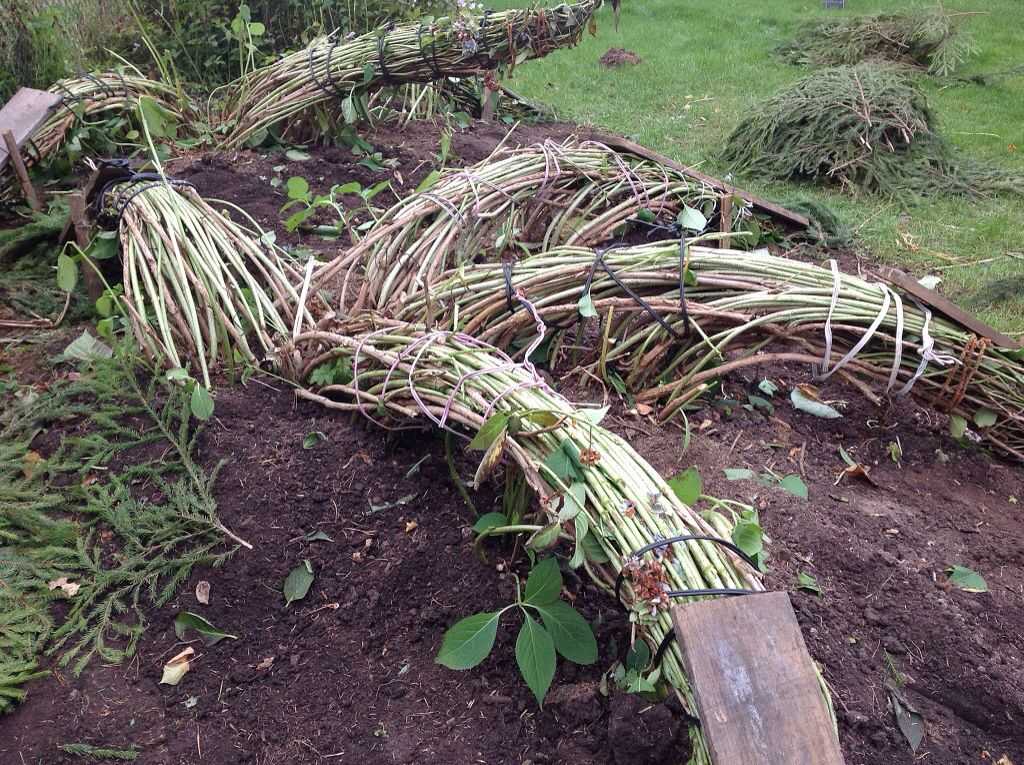 Most bigleaf hydrangeas bloom on old wood only, but the Endless Summer varieties bloom on both old wood and new growth.
Most bigleaf hydrangeas bloom on old wood only, but the Endless Summer varieties bloom on both old wood and new growth.
A hydrangea with pink pompom blooms, known as mopheads, may be a bigleaf hydrangea, but it could also be a mountain hydrangea (Hydrangea serrata). Mountain hydrangeas bloom on old wood.
Hydrangea serrata “Blue Billow” isn’t just beautiful. It’s also the most shade tolerant variety in the hydrangea world. (photo: Lorraine Ballato)
Hydrangeas with lacecap (flat) blooms could be either a mountain or a bigleaf variety, so lacecaps are not enough evidence to act on. Lorraine says to look at the foliage to get a better idea, or spend the season observing the plant, taking note of when it blooms and how it progresses. Does it change color? Does it rebloom?
Mountain hydrangeas come from the mountains of Japan and have greater hardiness. They can bloom in years that were too cold for other varieties.
Hydrangeas with lacecap (flat) blooms could be either a mountain or a bigleaf variety.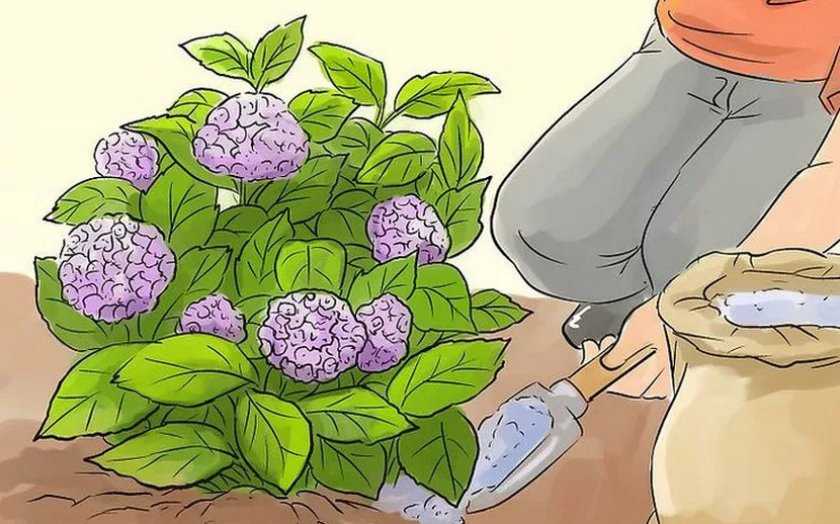 (photo: Lorraine Ballato)
(photo: Lorraine Ballato)
How to Care for a Reblooming Hydrangea
Treat rebloomers as if they are old-wood-only hydrangeas — meaning, don’t prune them at the start of spring. But because they have the capacity to put out flower buds for that season on new growth too, there is a trick to encourage more blooms. After the terminal flower — the flower at the tip of the stem — dies, clipping off the dead tips will encourage growth hormones to move up the plant. The stem will then produce flowers up its sides.
Treat reblooming hydrangeas like old-wood-only hydrangeas and don’t prune them at the start of spring. (photo: Lorraine Ballato)
Lorraine says that in very cold climates, like in Minnesota, flower buds on old wood just won’t survive the winter. In those circumstances, the right thing to do is to cut the rebloomers to the ground in April or early May, and encourage new growth, which will bloom later, in mid-July or August.
Cold-climate gardeners may never see flowers if growing hydrangeas that only put on new buds once per year. That’s why reblooming or continuous-blooming hydrangeas are the correct choice for colder climates, according to Lorraine. (Her favorite prolific rebloomer is Blue Enchantress.)
That’s why reblooming or continuous-blooming hydrangeas are the correct choice for colder climates, according to Lorraine. (Her favorite prolific rebloomer is Blue Enchantress.)
Blue Enchantress hydrangea is an example of a rebloomer. When the tip is cut, new flower buds will form up the stem. (photo: Lorraine Ballato)
Sun, Shade and Hydrangeas
Historically, hydrangeas were not tolerant of full sun. Some newer cultivars will tolerate full sun — but there are limits.
Bigleaf, mountain, oakleaf and climbing hydrangeas cannot be planted in full sun in the South, Lorraine says. They will fry. The only hydrangea type that can take full sun regardless of geography is the panicle hydrangea, which loves the sun.
Bigleaf and mountain hydrangeas do best with a half-day of sun, preferably morning sun.
Hydrangeas typically do best in a half-day of sun. Full sun can fry hydrangeas, especially in the South. (photo: Lorraine Ballato)
Wind and Hydrangeas
Lorraine said it took her about 10 years to learn the importance of protecting hydrangeas from wind in a cold climate. A fence, a shed or a plant with winter-persistent foliage, like a rhododendron or azalea, will block cold desiccating winds that kill flower buds.
A fence, a shed or a plant with winter-persistent foliage, like a rhododendron or azalea, will block cold desiccating winds that kill flower buds.
It’s important to protect hydrangeas from winter wind with a fence, shed, or a plant with winter-persistent foliage. (photo: Lorraine Ballato)
Watering Hydrangeas Without Drowning Them
In the afternoon sun, hydrangea foliage can become droopy, which gardeners often respond to by flooding the area with water. Lorraine says to instead take a break, then return in a few hours. After the sun has been off the plants for a while, the foliage will rehydrate and perk back up — assuming that the soil composition is correct, with lots of compost and a good layer of mulch.
Collapsing foliage temporarily is a way a plant protects itself from the beating sun. However, if the foliage has not perked back up hours later, there’s an issue. The soil is not retaining moisture, or some other plant may be sucking up the water faster than the hydrangea can.
Droopy foliage is how plants protect themselves in the hot sun. Before flooding it with water, wait a few hours and foliage will perk back up once it rehydrates naturally. (photo: Lorraine Ballato)
Propagate Hydrangeas Through Layering
A stem that touches the ground is an opportunity to easily propagate a hydrangea. It may be that the stem grew too heavy or something obstructed its growth. No matter the reason, it is primed to be separated into a new plant.
In spring, give the underside of the stem a cut, and then lay a rock on top to weigh the stem down, maintaining its contact with the ground. By July, give it a tug, revealing all the roots that have grown from the cut. Now you have a rooted cutting, ready to be transplanted elsewhere.
If a stem is touching the ground, this is an opportunity to propagate another plant through layering. (photo: Lorraine Ballato)
Controlling the Color of Hydrangeas with pH
Not all hydrangeas can change color, but those that do are influenced by the pH of the soil. Soil with a higher pH is more alkaline, and soil with a lower pH is more acidic. Soil with a pH of 6.0-6.2 will produce pink blooms, while soil with a pH of 5.2-5.5 will produce blue blooms.
Soil with a higher pH is more alkaline, and soil with a lower pH is more acidic. Soil with a pH of 6.0-6.2 will produce pink blooms, while soil with a pH of 5.2-5.5 will produce blue blooms.
It’s not the acid itself that turns flowers blue. Rather, acidic soil enables hydrangeas to more readily take up aluminum in the soil.
Foundations and sidewalks both leach lime into the soil, turning the soil more alkaline, which is why hydrangeas in foundation plantings that were blue when they came home from the nursery will soon turn pink.
Hydrangea bloom color for some varieties is influenced by the pH of the soil. Soil with a pH of 6.0-6.2 will produce pink blooms. (photo: Lorraine Ballato)
Lorraine recommends getting a soil test to determine both the pH and any nutrient deficiencies before blindly adding solid amendments or fertilizer to raise or lower pH. Holly-tone, for instance, may make the soil more acidic and the blooms more blue, but it also contains many nutrients that the hydrangeas don’t need.
Soil with a pH of 5.2-5.5 will produce blue blooms because acidic soil enables hydrangeas to more readily take up aluminum. (photo: Lorraine Ballato)
Only mophead and lacecap hydrangeas change colors. White hydrangeas and hydrangeas in any other shape will not change bloom color, no matter the pH. One new color-changing variety of note is Mathilda Gutges, a mophead bigleaf hydrangea that is deep purple rather than blue in acidic soil.
White hydrangeas will not change bloom color, no matter the pH. (photo: Lorraine Ballato)
Hydrangeas as Gift Plants
Small potted hydrangeas have become popular plants to pick up at the store for an easy gift. However, if they are placed outside, they may quickly die in the cold. These are intended for enjoyment indoors, where the blooms can last for months.
If planted outside in warmer weather, these gift plants may survive but never bloom. That’s because they have been bred specifically as indoor plants and cared for under very controlled circumstances to make enticing blooms that encourage shoppers to take them home. Outdoors, they will simply be a green bush, Lorraine says.
Outdoors, they will simply be a green bush, Lorraine says.
Small potted hydrangeas make a great gift but are best suited for indoor enjoyment. (photo: Lorraine Ballato)
Shopping for Hydrangea Care Supplies
Last year, garden centers sold out of many items as so many people took up gardening for the first time. Lorraine’s advice is to get out early this spring to shop for supplies while they last, and get enough for the whole year.
Either shrub fertilizer or rose food is good to keep on hand for all hydrangeas, but especially rebloomers. To be prepared to treat leaf spot diseases and powdery mildew when they came around in July, buy organic treatments now.
And pick up a sharpener for your pruners, because a dull pruner will do more harm than good. Lorraine says to check out YouTube to learn how to sharpen tools — and it’s easier than you think.
Yellow sticky traps will help identify the bugs that have been eating plants, and, last but not least, get plenty of deer repellent.
The Importance of Organic Care Methods for Hydrangeas
Hydrangeas attract pollinators. Lacecap varieties in particular are bee and butterfly magnets. That makes it incredibly important to refrain from spraying hydrangeas with chemical pesticides. Organic, targeted pest treatments are always a better choice than broad-spectrum treatments that will kill off beneficial insects.
Big box stores often don’t carry the organic products that independent garden centers do. That’s one of the reasons why it’s so important to support these small businesses that support us.
If you haven’t already listened to my conversation with Lorraine Ballato on hydrangea care, you can do so now by scrolling to the top of the page and clicking the Play icon in the green bar under the page title.
What is your favorite variety of hydrangea? Let us know in the comments below.
Links & Resources
Some product links in this guide are affiliate links. See full disclosure below.
Episode 040: Prepping Your Garden for Spring: 10 Things to Do Now
Episode 114: Understanding Hydrangeas: Pruning, Blooming, Color-Forcing & More
Episode 119: Deer-Resistant Design: Fence-Free Solutions to Protect the Plants You Love
Episode 138: Why Pruning Matters: Principles, Recommendations and Tips from the Pruner’s Bible
joegardenerTV YouTube: Five Key Steps for Planting Trees & Shrubs Like the Pros
joegardenerTV YouTube: The 3 Biggest Mistakes When It Comes to Pruning
joegardener blog: Pruning 101: The Pruning Basics from A to Z
joegardener blog: Preparing the Garden In Spring
joegardener Online Gardening Academy™: Three popular courses on gardening fundamentals; managing pests, diseases & weeds; and seed starting.
joegardener Online Gardening Academy Master Seed Starting: Everything you need to know to start your own plants from seed — indoors and out.
joegardener Online Gardening Academy Beginning Gardener Fundamentals: Essential principles to know to create a thriving garden.
joegardenerTV YouTube
joegardener Newsletter
joegardener Facebook
joegardener Facebook Group
joegardener Instagram
joegardener Pinterest
joegardener Twitter
Growing a Greener World®
GGWTV YouTube
LorraineBallato.com
“Success with Hydrangeas: A Gardener’s Guide” by Lorraine Ballato
National Garden Bureau: Getting the Blooming Hydrangeas of Your Dreams!
Milorganite® – Our podcast episode sponsor and Brand Partner of joegardener.com
Greenhouse Megastore – Our podcast episode sponsor and Brand Partner of joegardener.com – Enter code JOEGARDENER for 10% off your order
High Mowing Organic Seeds – Our podcast episode sponsor and Brand Partner of joegardener.com – Enter code JGSEEDS for 10% off orders of $50 or more
Disclosure: Some product links in this guide are affiliate links, which means we would get a commission if you purchase. However, none of the prices of these resources have been increased to compensate us.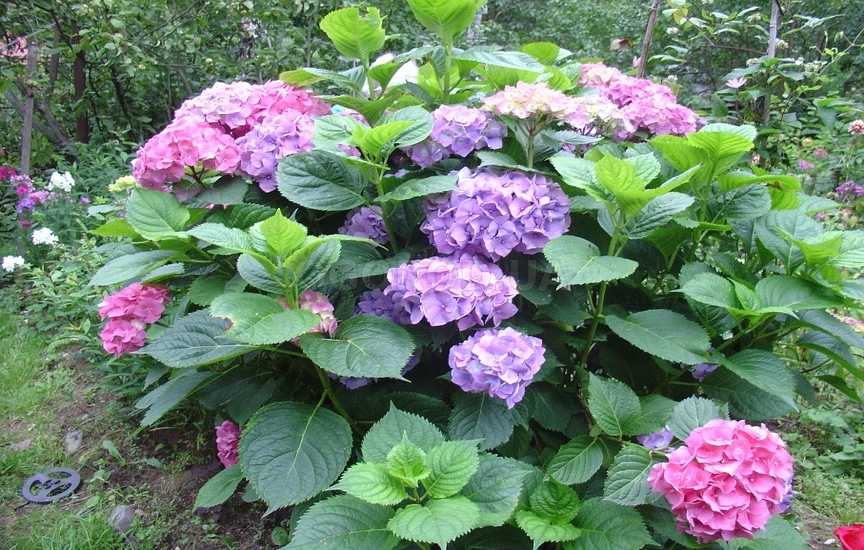 None of the items included in this list have any bearing on any compensation being an influencing factor on their inclusion here. The selection of all items featured in this post and podcast were based solely on merit and in no way influenced by any affiliate or financial incentive, or contractual relationship. At the time of this writing, Joe Lamp’l has professional relationships with the following companies who may have products included in this post and podcast: Rain Bird, Corona Tools, Milorganite, Soil3, Exmark, Greenhouse Megastore, High Mowing Organic Seeds, and Wild Alaskan Seafood Box. These companies are either Brand Partners of joegardener.com and/or advertise on our website. However, we receive no additional compensation from the sales or promotion of their product through this guide. The inclusion of any products mentioned within this post is entirely independent and exclusive of any relationship.
None of the items included in this list have any bearing on any compensation being an influencing factor on their inclusion here. The selection of all items featured in this post and podcast were based solely on merit and in no way influenced by any affiliate or financial incentive, or contractual relationship. At the time of this writing, Joe Lamp’l has professional relationships with the following companies who may have products included in this post and podcast: Rain Bird, Corona Tools, Milorganite, Soil3, Exmark, Greenhouse Megastore, High Mowing Organic Seeds, and Wild Alaskan Seafood Box. These companies are either Brand Partners of joegardener.com and/or advertise on our website. However, we receive no additional compensation from the sales or promotion of their product through this guide. The inclusion of any products mentioned within this post is entirely independent and exclusive of any relationship.
preparation for winter, pruning and sheltering
- Details
- Anatoly Vorontsov